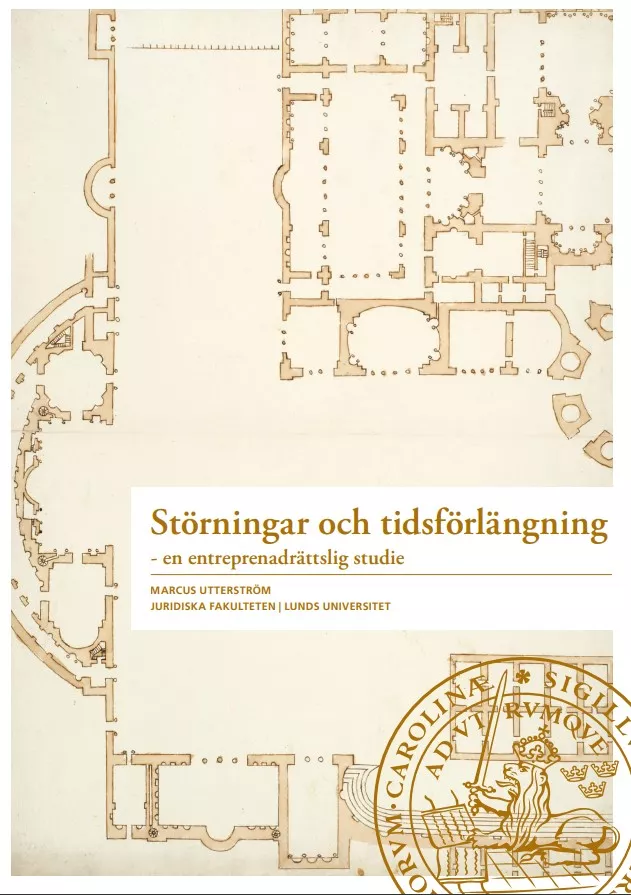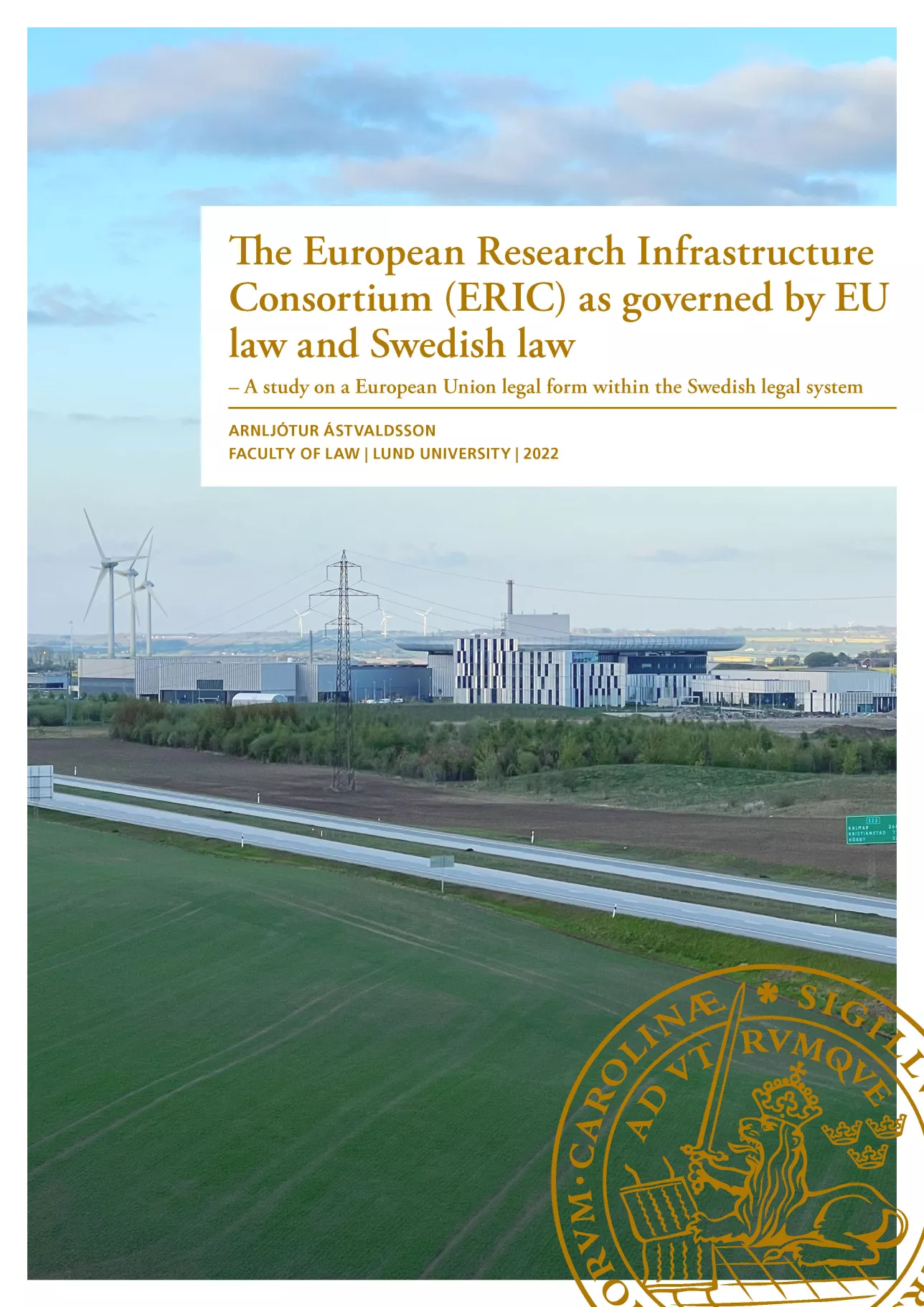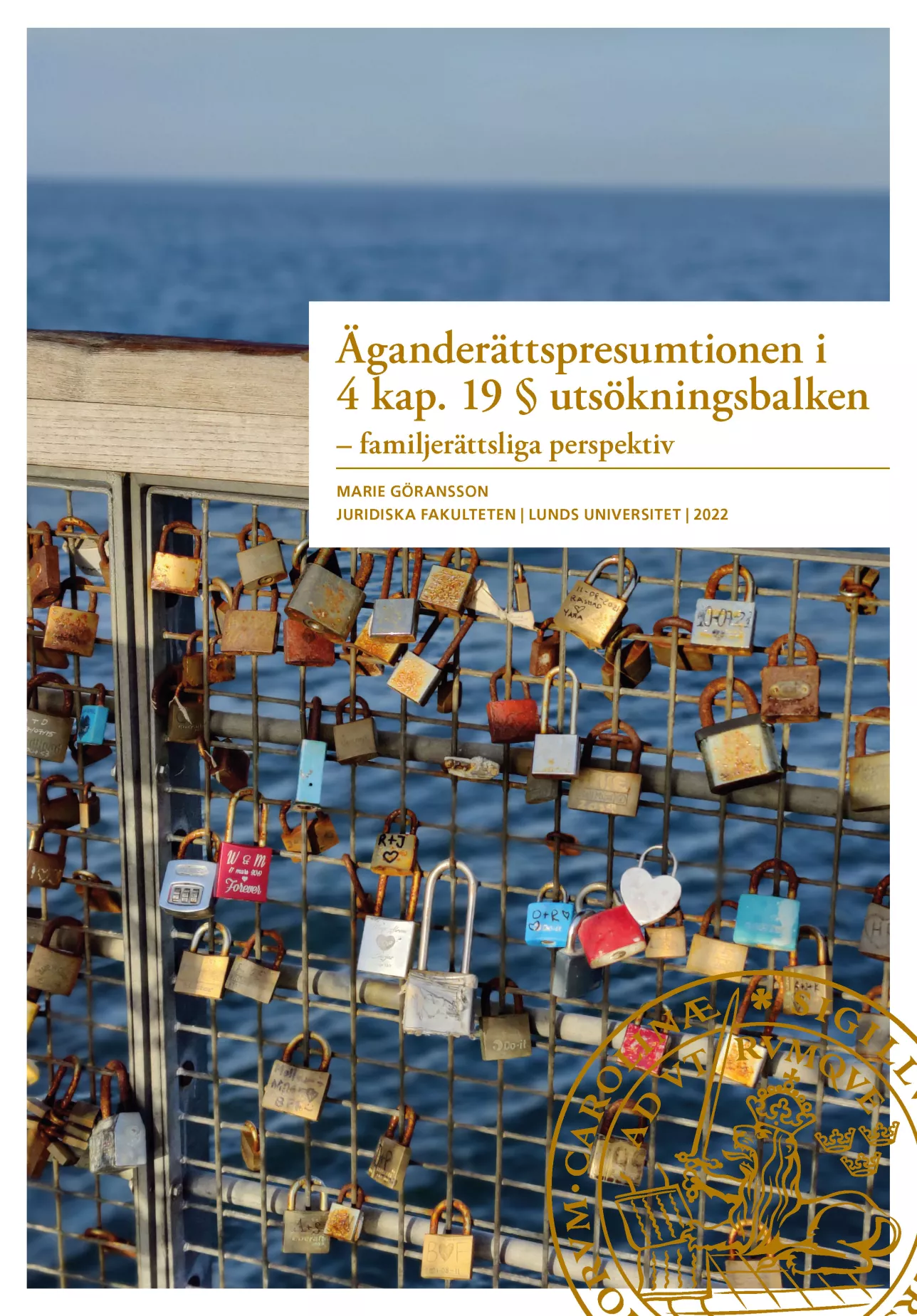Disputationer 2022
Anders Sjögren
Straffrättsliga förhållningsregler – En rättsvetenskaplig studie av förbuds-, påbuds- och permissivregler som riktar sig till enskilda
Datum för disputation: fredagen den 14 oktober
Fakultetsopponent: professor em Dan Frände, Helsingfors universitet
Ämne: straffrätt
Abstract
This thesis focuses on conduct rules in criminal law. Such rules prohibit, proscribe and permit different courses of conduct that individuals are obligated to, or in the case of permissions, allowed to follow. The correlates to conduct rules are criminal adjudication rules. As a result, very little has been said in the literature about conduct rules and how they function. This knowledge gap raises concerns since it results in a lack of legal foreseeability for individuals regarding what they are legally supposed to do or not to do. The aim of this thesis is thus to give a clear presentation of conduct rules within criminal law. The aim is reached by applying a norm perspective on conduct rules. This simply means that the content within any legal order is seen as constituted by legal norms. When this perspective is applied on conduct rules it is possible to distinguish how these rules can be broken down into smaller units, where the units are legal norms. The task then becomes to analyze each legal norm in turn and only thereafter turn to considerations pertaining to how those norms connect to each other and give rise to conduct rules.
The thesis contains seven chapters. The subject matter is introduced in chapter 1. Chapter 2 examines different types of legal orders and legal systems as well as norm typologies within such systems. Chapter 3 discusses how human agency is connected to rule-following. Chapter 4 explores the first part of conduct rules, i.e. conduct norms. Chapter 5 discusses the second part of conduct rules, i.e. normative modalities, the use and distribution of legal terms and other linguistic properties in a legal system as well as legal powers conferred on persons. Chapter 6 presents the third, and final, part of conduct rules, i.e. sanction norms. Chapter 7, finally, focuses on the normative context in which conduct rules emerge.
Läs om Anders Sjögrens avhandling i Lunds universitets forskningsportal.
Kristian Gustafsson
Barnets bästa vid utmätning och exekutiv försäljning av bostäder i svensk utsökningsrätt
Datum för disputation: fredagen den 7 oktober 2022
Fakultetsopponent: professor Julia Köhler-Olsen
Ämne: civilrätt
Abstract
The subject of the present thesis is children’s rights in the process of debt collection. The main focus of the thesis is article 3.1 of Convention on the Rights of the Child (CRC) and its legal relevance in proportionality tests prior to decisions on seizure and sales of houses and apartments in Swedish insolvency law. The thesis is based on two studies. One legal dogmatic study on Swedish enforcement law and article 3.1 of the CRC, and one empirical study on the parties’ argumentation in the Swedish Enforcement Agency case law.
The legal dogmatic study focuses on how article 3.1 of the CRC is described in Swedish legal sources. The analysis takes as a starting point that article 3.1 is a threefold concept containing a substantive right, a fundamental interpretative legal principle, and a rule of procedure. These three parts of the right are understood as connected. In order to make nuanced proportionality tests and respect article 3.1 as a substantive right, the decision maker needs information about the child that the decision concerns. The process must include an evaluation of the possible impact of the seizure or the sale. Such impact can only be evaluated if the decision maker has access to information about the child.
Many of the conclusions of the thesis elaborate on how to create safeguards in the process of debt collection, in order to make sure that decision making is based on substantive information about children who are at risk of losing their homes. A considerable part of the thesis is also aimed on how information can be used in order to respect the creditor’s interest of regulating debt and getting paid.
The thesis also suggests as an overarching conclusion that Swedish enforcement law can create several safeguards to ensure that children’s rights are taken into consideration more consistently and in a more nuanced way in Swedish law. I argue that this can be done by regarding information that is already collected by the Swedish enforcement agency (Kronofogdemyndigheten) in its existing proceedings. The empirical study shows that Kronofogdemyndigheten collect several points of information regarding the debtor and their children that is not taken into consideration in the proportionality tests by many of its decisions makers. I argue that some of that information ought to have a more central part in the legal decision making. Further, I argue that the child’s interest should be referenced in all decisions concerning children. When a decision is contested, the district court should always be informed that the debtor is a parent. This is an important safeguard to make sure that children’s rights are taken into account in decisions on seizures and sales of houses and apartment in Swedish law in a consistent way.
The legal dogmatic analysis is also informed by the empirical case study. The empirical study is qualitative and contains an analysis of the argumentation from legal practitioners at Kronofogdemyndigheten. In the empirical study, I show how information is used in legal argumentation regarding the creditor’s interest and the child’s interest of its home. The study shows that there is a number of practitioners that use information at hand in order to make more nuanced arguments on the legal relevance of the CRC and the child’s interests. These nuanced arguments are studied and used as best practice insights in the legal analysis. Further, the empirical study shows that some information about children and other types of information on the economic situation of the debtor, often the parent, was not used in the decision making during the studied period. I also contribute with suggestions on how information that is always available for Kronofogdemyndigheten ought to be used in the decision making.
The empirical study is based on data from the period of 2018-2019. It is therefore a study on how legal argumentation on the CRC was done prior to the incorporation of the CRC in Swedish Law. Since the incorporation, Kronofogdemyndigheten has issued a number of documents with descriptions on the authority and its interpretations of its legal obligations with regard to the CRC. Kronofogdemyndigheten described the incorporation as a clarification of what Swedish law was/demanded, also prior to the incorporation. The empirical study is used to compare how the CRC was used in legal argumentation prior to the incorporation, and how the CRC is described by the authority after the incorporation.
Läs om Kristian Gustafssons avhandling i Lunds universitets forskningsportal.
Marcus Utterström
Störningar och tidsförlängning - en entreprenadrättslig studie
Datum för disputation: fredagen den 23 september 2022
Fakultetsopponent: professor Christina Ramberg, Stockholms universitet
Ämne: civilrätt
Sammanfattning
I avhandlingen undersöks vilka störningar i entreprenadavtal som kan ge entreprenören rätt till tidsförlängning.
Med störning avses i avhandlingen en omständighet som avviker från vad entreprenören förutsatt (antagit) senast vid avgivandet av sitt löfte (anbud) att ingå avtalet som gör att entreprenörens arbeten inte kan utföras som planerat och som orsakar tillkommande kostnader, en försening eller bådadera. Störningar kan delas upp i tre momenten avvikelse, arbetspåverkan och effekt.
Störningar är ett för entreprenadavtal karaktäristiskt och vanligt förekommande problem. Det kan betraktas som en för entreprenadavtalet särskild typ av ändrade förhållanden. Att det har förekommit en störning i en entreprenad säger i sig ingenting om huruvida entreprenören har rätt till tilläggsvederlag, tidsförlängning eller någon annan rättsföljd.
I avhandlingen undersöks vilka störningar som kan ge entreprenören rätt till tidsförlängning enligt reglerna i standardavtalet AB 04 och när parternas avtal inte ger något besked. Undersökningen sker med utgångspunkt i ett antal typfall av avvikelser.
Vilka dispositiva regler som bör tillämpas på entreprenadavtal är ofta oklart. I avhandlingen undersöks hur likheter mellan reglerna i standardavtalen AB 04, NS 8405 och AB 18 kan ligga till grund för argument om hur entreprenadavtal bör fyllas ut när det saknas direkt tillämpliga rättsregler eller rättsregler som är lämpliga att tillämpa analogt.
Läs mer om avhandlingen i Lunds universitets forskningsportal.

Arnljótur Ástvaldsson
The European Research Infrastructure Consortium (ERIC) as governed by EU law and Swedish law
– A study on a European Union legal form within the Swedish legal system
Datum för disputation: fredagen den 17 juni 2022
Fakultetsopponent: docent Elif Härkönen, Linköping universitet
Ämne: civilrätt
Abstract
The thesis studies a European Union legal form for organisation from the perspective of EU law and Swedish law on associations (associationsrätt). The legal form in focus is the European Research Infrastructure Consortium (ERIC), which was introduced by Council Regulation (EC) No 723/2009 of 25 June 2009 (the ERIC Regulation). The ERIC legal form allows states and intergovernmental organisations to join forces in an entity around the establishment and operation of a research infrastructure. One of the ERICs established is the European Spallation Source ERIC (ESS ERIC), which has its statutory seat and centre of operations in Sweden (Lund).
The overarching purpose is to clarify the legal situation regarding ERICs and ERIC members under EU law and Swedish national law and to contribute to the understanding of ERICs as legal entities within these legal systems. This is achieved in two main ways. First, by discussing and analysing how ERICs are regulated in the ERIC Regulation and in the statutes of established ERICs. Secondly, by discussing and analysing to what extent rules governing other legal forms can complement the legal framework of ESS ERIC and other ERICs, which operate within the Swedish legal system. Examples of general legal forms which are recognised as associations under Swedish law are the company limited by shares (aktiebolag), the registered partnership (handelsbolag), the cooperative society (ekonomisk förening), and the non-profit member organisation (ideell förening). Entities operating within these legal forms are governed by Swedish association law.
The thesis offers guidance to the applier of the law, including the CJEU and Swedish national courts, on how to approach a matter which arises in relation to an ERIC but is not regulated by the ERIC Regulation or relevant ERIC statutes. To that end the thesis approaches the ERIC legal form from the perspective of both EU law and Swedish national law and examines (i) whether EU law provides rules which govern the formation and organisation of legal entities that can apply to ERIC matters and (ii) whether ERICs can be assimilated to one or more Swedish legal forms and whether Swedish association law provides rules that can apply to ERIC matters.
The thesis also contributes to the understanding of ERICs as legal entities by studying the statutes of all 23 ERICs that have been established and discussing the nature of their operations and essential organisational characteristics, as well as analysing how ERIC statutes regulate matters such as member liability and membership rights.
The thesis puts a particular focus on the legal position of ERIC members. It discusses and analyses the rights and obligations of ERIC members under the ERIC Regulation and ERIC statutes and examines the extent to which EU law and Swedish national law provide legal rules that can complement ERIC legal frameworks by protecting the membership interest or by imposing obligations upon members.
Läs om Arnljótur Ástvaldssons avhandling i Lunds universitets forskningsportal.

Marie Göransson
Äganderättspresumtionen i 4 kap. 19 § utsökningsbalken – familjerättsliga perspektiv
Datum för disputation: fredagen den 22 april 2022
Fakultetsopponent: professor Margareta Brattström, Uppsala universitet
Ämne: civilrätt
Absract
According to the Swedish Enforcement Code a debtor is presumed to be the sole owner of movable property which is possessed jointly with a spouse or domestic partner. In my thesis, I investigate this statutory presumption of ownership from a family law perspective. The applicability of the statutory presumption as well as its legal repercussions are determined by family law. It is therefore surprising that research linking the statutory presumption to Swedish family law is scarce. In my research, I map the area where the statutory presumption intertwines with family law. Thereby, I contribute to the overview of the area.
In addition to the overview, my investigation into the statutory presumption provides an outside perspective on Swedish law applicable to spouses’ and domestic partners’ financial relations to each other. This area of law has in previous research mainly been studied from an inside perspective, with the Marriage Code and Cohabitees Act as the point of departure. In the thesis, I use the statutory presumption as a lens to study two different family law themes. Through this approach, I can reveal significant information of the legal content of marriages and domestic partnerships as well as of the legal perception of those institutions.
The first theme concerns the fact that the statutory presumption for the debtor’s sole ownership covers all movable property that spouses and domestic partners possess jointly. I inquire what the implications of the statutory presumption in this regard are to spouses’ and domestic partners’ individual legal subjectivity. The second theme concerns the fact that the statutory presumption is applicable to spouses and domestic partners on equal terms, whereas the Marriage Code and the Cohabitees Act provide for a clear differentiation between spouses and domestic partners. I inquire if the family law regulation and the statutory presumption of ownership build on different conceptions regarding the level of community in real marriages and domestic partnerships.
Läs om Marie Göranssons avhandling i Lunds universitets forskningsportal.
